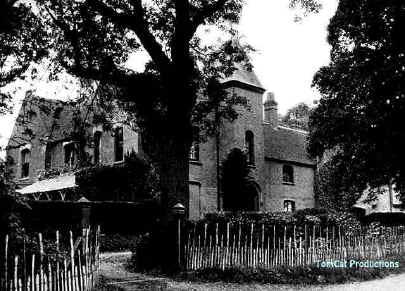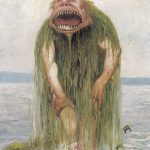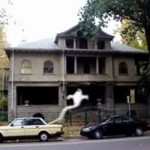Borley Rectory is often called “The most haunted house in England.” The site of the rectory originally held a monastery, which was inhabited by Benedictine monks. Subsequent to this, the monastery came under the ownership of the Waldergrave family, who occupied it for three centuries. In the late 1800’s a descendant of the Waldegraves, the reverend H.D.E. Bull, built a new rectory on the site of the old monastery. It was not until after the new rectory was built that strange things started to happen.
In the late 1920s, the house was owned by a reverend (Lionel A. Foyster) and his wife who reported poltergeist-like phenomena. Supposedly the prankish spirit locked the wife in the bedroom, and other times threw her out of the bed. There were also pebbles thrown at the windows, and mysterious writing which would appear on walls.

Harry Price, a famous ghost hunter, investigated Borley Rectory in 1929, and again in 1937. He supposedly witnessed some of the activity, including the ghostly nun. Although Price spent a great deal of time in the Rectory, his research is generally considered to be biased and therefore flawed.
Unfortunately, Borley Rectory burned down in 1939, taking its secrets with it. In 1945, human remains rumored to be those of the nun were found on the site, and were given a proper burial. But the legend of Borley has not died yet; people still visit the site today to see if they can spot the ghostly nun.
One of the spectres that was said to roam the grounds was a nun from the Bures convent, 7 miles southeast of Borley, who in the 13th century fell in love with and tried to elope with a monk. Legend told of a nun falling in love with a monk from the monastery. They had decided to elope to be together, but the elders discovered their plans. A friend of the monk was to drive a carriage to help them escape. On the fateful night they were captured by the elders. The coachman was beheaded, the monk hanged and the nun was bricked up alive in the walls of the vaults beneath the rectory.According to legend, the nun and monk were caught in their get-away horse and carriage. As punishment, the monk was hung and the nun was walled up alive in the rectory. Some people reported seeing the ghostly form of the horse and carriage in addition to the nun. The reverend Harry Bull, who died at Borley, also was reputed to have haunted the rectory. He would appear dressed in the grey jacket in which he passed away.
It was confirmed in 1938 that this legend had no historical basis and seems to have been invented by the rector’s children to romanticise their red-brick rectory. The story of the walling up of the nun was probably taken from a novel by Rider Haggard. After Harry Price’s death in 1948, three members of the English Society for Psychical Research, two of whom had been Price’s most loyal associates, investigated his claims about Borley and published their findings in a book, The Haunting of Borley Rectory, in 1956, which concluded that any evidence for a haunting was hopelessly confused by Harry Price’s duplicity. The “Borley Report”, as the SPR study has become known, stated that much of the phenomena were either faked or were due to natural causes such as rats and the strange acoustics due to the odd shape of the house.
In 2000 a book was published claiming that the haunting of Borley Rectory was what many skeptics has suspected all along – simply an elaborate hoax. The book – We Faked the Ghosts of Borley Rectory – was written by Louis Mayerling.
Mayerling had lived in the Borley area and knew the Reverend Bull and his children well. According to Mayerling, he helped the Bull family to fake the ghosts and other psychic phenomena. The servants were apparently in on the game and encouraged the children to use the various hidden passages that existed in the rectory to make the game more convincing.








